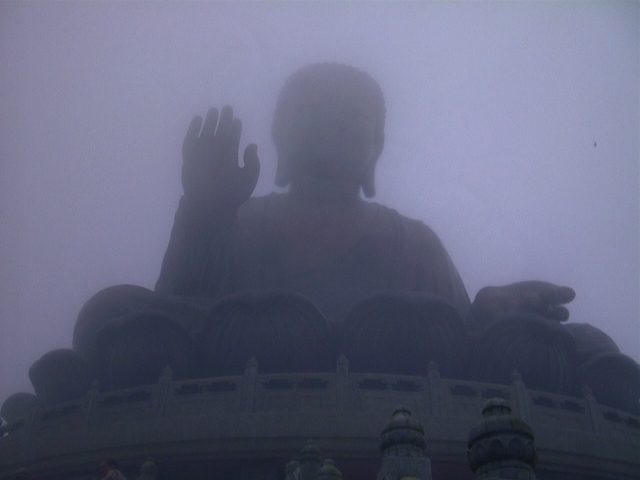STOP THE DISTANT ROWBOAT


USING JUST YOUR MIND


USING JUST YOUR MIND
Imagine you are standing along the shore of a large lake with a Zen friend. You look out on the lake and see a rowboat slowly moving across the water. At this point your friend says to you, "Stop the distant rowboat using just your mind."
At first you may laugh, or imagine some kind of telekinetic powers, and think your friend is joking. But then you look at him and see that he is quite serious. What in the world is he talking about? He will not explain any further, and the statement troubles you all day. That evening you go home and meditate, and during the meditation: Aha! You suddenly understand what he was saying.
I do not mean to dismiss the "Aha!" experience, but I will give away the "trick" of the Koan right here. (Not that this does not leave some "Aha!"!) The lake, the rowboat, and the motion all exist in your mind. It does not take any telekinetic powers to stop the rowboat -- you only need to stop breaking the world up into pieces. The rowboat is not fundamentally different from the water in the lake, or, for that matter, from you or from the man rowing the boat. Once there is no rowboat, no water, and no motion in your mind you have indeed done as the Koan asks.

Some people may be happy with that explanation of the Koan, and that is fine. But that is really an intellectual "explanation" of the Koan and does not stop the boat. The idea is to meditate on the Koan until you personally experience the dissolving of subject and object. Even if it seems inconceivable, it really is possible.
Han-shan Te-ching (Hanshan Dequing, 1546-1623) experienced Enlightenment when at Mt. Wu Tai he read the treatise by an early Chinese Madhyamika monk called Things do not Move. According to the record, Han-shan served as proofreader of the Book of Chao, the source of "Things do not Move." Han-shan came across the stories of a Bramacharin who had left home in his youth and returned when he was white-haired. When people saw him, the neighbors asked, "Is that man [whom we know] still living today?" The Bramacharin replied, "I look like that man of the past, but I am not he." On reading this story Han-shan suddenly understood that all things do not come and go. When he got up from his seat and walked around, he did not see things in motion. When he opened the window blind, suddenly a wind blew the trees in the yard, and the leaves flew all over the sky. However, he did not see any signs of motion. When he went to urinate, he still did not see signs of flowing. He understood what the text spoke of as, "Streams and rivers run into the ocean and yet there is no flowing." At this time, Han-shan shattered all doubt and existential concerns about birth and death.
In a more modern day context, the comments above by an established and proven master of old can be compared to those of Susan Segal, a young woman who is reputed to have experienced Awakening in the present modern-day era:
"I suddenly became aware that I was driving through myself. For years there had been no self at all, yet here on this road, everything was myself, and I was driving through me to arrive where I already was. In essence, I was going nowhere because I was everywhere already. The infinite emptiness I knew myself to be was now apparent as the infinite substance of everything I saw."
The usual position for the eyes in Zen meditation is open. In some schools it is suggested to look slightly downward at the floor a few feet in front of you. At times it may be suggested to close the eyes. When I am meditating I sometimes like to look all around. After the differentiation of the world into separate objects has fallen away it can be fascinating to just look around. To look at the table and the chair but not to see them as separate from the carpet and the wall, etc. It can be fleeting, though. As soon as you think, "Hey, I'm really doing it!", it suddenly slips away. With practice, though, the slipping away occurs less and less.
So the next time you are meditating, or JUST SITTING, you might want to see if you can stop the distant rowboat using just your mind.
Fundamentally, our experience as experienced is not different from the Zen master's. Where
we differ is that we place a fog, a particular kind of conceptual overlay onto that experience
and then make an emotional investment in that overlay, taking it to be "real" in and of itself.

|
|

